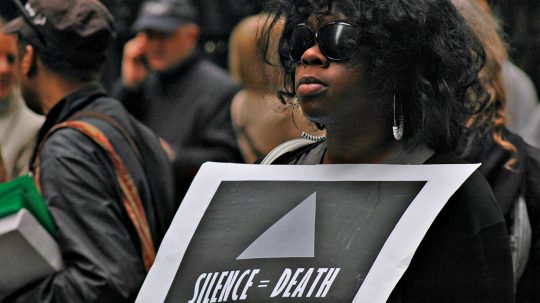The debate over infant male circumcision is heating up. Iceland has proposed new laws to ban the practice for non-medical reasons, and recent polling reveals that 62 percent of Brits would support a similar ban here in the UK.
There are passionate voices on both sides, but to try and get to the heart of the issue, we’ve spoken to barrister and outspoken critic of neonatal circumcision James Chegwidden, and Milah UK, a group campaigning to protect the rights of the Jewish community to carry out Brit Milah (religious circumcision).
A Matter of Religious Freedom?
 Image credit: Unsplash.com.
Image credit: Unsplash.com.
Article 9 of the Human Rights Convention guarantees the right to manifest our beliefs through worship, teaching, practice and observance. For religious communities, this provides unequivocal support for a parent’s right to decide that their infant child ought to undergo religious circumcision.
The covenant that Brit Milah is an indicator of underpins all of the rules and obligations that guide Jews religiously, morally and practically
Milah UK
‘Brit Milah’ (the Hebrew term used to describe the religious circumcision of boys in accordance with Jewish law) is not just circumcision, but a religious ritual carried out in accordance with certain rules. “The covenant that Brit Milah is an indicator of underpins all of the rules and obligations that guide Jews religiously, morally and practically,” a spokesperson for Milah UK told RightsInfo. “It is critical to transmitting that ethical framework down the generations”.
No-one can seriously or rationally suggest that amputating a part of another person’s body who didn’t consent amounts to respect for the rights and health and safety of others.
James Chegwidden, barrister
However, the right to manifest one’s beliefs is a ‘qualified right’ which may be restricted in certain circumstances. In particular, it may be limited for the protection of the health, rights and freedoms of others. For James Chegwidden, who successfully acted against the forced circumcision of two young boys before the High Court, this reveals a glaring problem. “No-one can seriously or rationally suggest that amputating a part of another person’s body who didn’t consent amounts to respect for the rights and health and safety of others,” he said.
He also noted that it is one thing to say that Article 9 supports a right to practice your own religion, but a different thing entirely to say that it allows you to impose it upon another person in a manner that is permanent and irreversible. “Those who wrote the Convention did not intend Article 9 to confer any right to impose religious belief or practice upon others – quite the reverse: the right is a defensive right protecting each individual’s autonomy as to religious affiliation.”
But Wait, Don’t Parents Have a Right to Impart Their Beliefs on Their Children?
 Image credit: Unsplash.com.
Image credit: Unsplash.com.
Yes, and this is guaranteed by Article 8 of the Convention, which protects our right to a private and family life. “Parents make very profound decisions for their children – what they eat, where they sleep, whether to have ears pierced or even whether or not to have immunisations,” Milah UK’s spokesperson explained. “We understand that parents have a right to raise children according to their values, even if we would not make the same decision ourselves”.
However, like Article 9, Article 8 is also a ‘qualified right’. Whilst it certainly supports a parent’s right to raise their children with certain beliefs, James Chegwidden does not believe that it includes a right to cut one’s children for that purpose. “It’s not a carte blanche,” he said. “It has to be harmonious with the child’s other rights”.
This includes the child’s right to bodily integrity, which Chegwidden believes is enshrined through a combination of Article 3 (prohibiting inhuman or degrading treatment) and the right to a private life in Article 8.
But according to Milah UK, this is not the whole story. “Although an adult Jewish man could [later] decide to have the procedure, they would not have fully followed in a tradition that unites them with other Jewish men, including their family, and with the founder of the religion,” I was told. “It would likely be a matter of deep regret and sorrow. It would be a potential infringement of their religious freedom.”
Comparisons with FGM
 Image credit: Unsplash.com.
Image credit: Unsplash.com.
It is often argued that infant male circumcision should be treated in the same way as female genital mutilation (FGM), which is totally illegal in all its forms. Proponents of this argument say that if it is accepted that Articles 8 and 9 of the Convention do not give parents the right to circumcise girls, then they should not confer a right to circumcise boys. This raises additional issues under Article 14 of the Convention, which states that the rights in the Convention must be secured without discrimination, including on the basis of gender.
Milah UK says that it is wrong to equate infant male circumcision with FGM, as there is no recognised long-term negative impact on the child. “Trained circumcision practitioners are subject to a regulatory regime of monitoring and audit. The Jewish community takes the need to maintain the highest standards very seriously,” they add.
But for James Chegwidden, going down the “rabbit hole” of trying to define an acceptable level of harm is fundamentally flawed. “Where the victim is a child, no infliction of harm is today acceptable,” he said. “When it comes to inflicting actual bodily harm (which genital cutting certainly amounts to), it is simply not a defence to argue that ‘there are worse assaults than this’. The law of assault is designed to protect individuals – and particularly vulnerable ones – from all levels of non-consensual harm”.
At least some forms of Type IV [FGM], for example, pricking, piercing and incising, are on any view much less invasive than male circumcision
Sir James Munby, Re B and G (Children) (No 2)
Chegwidden also disagreed with the assumption that FGM is necessarily more harmful and intrusive than male cutting. Whilst, he said, it is true that the most severe forms of FGM are more harmful than the most common form of male circumcision, it is not true that this is the case for all forms of FGM.
As the President of the Family Court Sir James Munby acknowledged in Re B and G (Children) (No 2): “At least some forms of Type IV [FGM], for example, pricking, piercing and incising, are on any view much less invasive than male circumcision”. Yet whilst all forms of FGM have been criminalised, infant male circumcision remains legal – a fact described by the Family Court President as a “curiosity”.
A Different Angle…
 Image credit: Unsplash.com.
Image credit: Unsplash.com.
The practice of neonatal circumcision is often presented as an issue of religious freedom; a question of how far religious rights should extend. But for Chegwidden, this is the wrong approach.
“I don’t think it’s primarily an issue about religious rights – this is an issue about children’s rights,” he told me. “The reason why we are in a mess is not because we don’t have a clear idea about how far religion goes, it’s because we don’t yet treat children as full rights-holders”.
The reason why we are in a mess is not because we don’t have a clear idea about how far religion goes, it’s because we don’t yet treat children as full rights-holders
James Chegwidden, barrister
Chegwidden points out that no-one disagrees that it would be criminal and morally reprehensible for a person to circumcise an 18-year-old without their consent, so why should it be ok for the same thing to be done to an infant? “If anything, the child deserves more protection than the adult, on account of his or her special vulnerability”.
But Milah UK suggests that this is not a full picture of the child’s rights, and that the best interests of the child must be the “primary consideration”. This cannot be assessed in a ‘vacuum’, but must be considered in the child’s particular cultural context. “Arguments against circumcision often centre on its irreversibility. However, the decision not to undertake Brit Milah in a way that “fully participates in the tradition is also irreversible,” I was told.
So What Happens Next?
 Image credit: Unsplash.com.
Image credit: Unsplash.com.
The ban proposed in Iceland will be considered by the Alþingi (Iceland’s parliament) in the coming months. If the proposals pass into law, it is likely they will be challenged in the Human Rights Court.
Chegwidden believes that “bets are off” as to whether the ban would survive such a challenge. He described the practice of infant male circumcision as the “white elephant” in modern legal systems, which “has survived in a way that no other form of assault on children has”. On whether the UK could adopt similar measures in the future, he believes that it is all a matter of political will, but that the measures proposed in Iceland could be a catalyst for change.
Milah UK’s position on the proposals in Iceland is very clear. “Brit Milah is a non-negotiable element of Jewish identity, common to Jews from all backgrounds and respected in liberal democratic countries,” I was told. “For a country such as Iceland, that considers itself a liberal democracy, to ban it, thus making sustainable Jewish life in the country impossible, is extremely concerning”.







